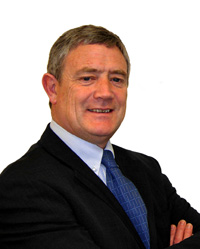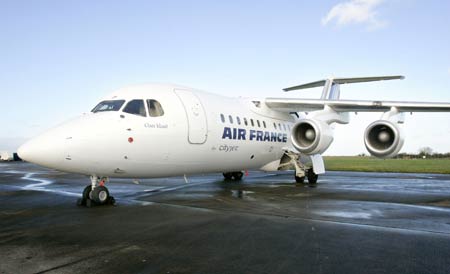 “All Russian air traffic controllers speak English with an Irish accent,” smiles the man who is responsible for this anomaly.
“All Russian air traffic controllers speak English with an Irish accent,” smiles the man who is responsible for this anomaly.
CityJet chief executive Geoffrey O’Byrne White has had a diverse career. He flew fast jets for the Irish Air Corps for 14 years and has selected astronauts for the European Space Agency, but he now heads Air France’s rapidly evolving Irish subsidiary.
O’Byrne White’s relaxed manner sits in stark contrast to the surrounding flurry of activity at London City Airport, stirred up by the airline’s expansion plans.
Moments earlier O’Byrne White revealed that CityJet is to double its network with eight new destinations from London City. Shifting away from its traditional Parisian feeder role, the new London City commuter links will serve a string of European cities including Geneva, Madrid, Milan Linate, Nice and Zurich.
In many ways CityJet’s London City expansion marks a return to its roots. In January 1994 its first scheduled route was Dublin-London City. Two years later it tied up with Air France on services between London City and Paris Charles de Gaulle. In 2000 Air France took full control of CityJet.
O’Byrne White says that CityJet’s relationship with Air France works very well, as long as the Irish carrier is allowed to retain its autonomy. He adds that Air France has no plans to divest of its interest.
“The relationship between Air France and CityJet has been a very successful one,” he says. “We are the most cost-efficient regional operation for a mainline carrier in Europe.”
Autonomy
Although CityJet is a franchise operation, it operates at its own risk. Its scope is limited to aircraft with fewer than 100 seats; it pays a sizeable sum in distribution royalties and must adhere to its parent’s standards; but it makes its own economic decisions and generates its own revenues.
“Sales and distribution is such an enormous cost, it can sink a small airline,” says O’Byrne White. “We are plugged into global sales and distribution and have access to Paris Charles de Gaulle and London City, making us a good airline.”
O’Byrne White says that flexibility is the key to CityJet’s business model. He steers away from rapid expansion, saying that this inevitably causes a lot of stress in any airline, but this outlook is not hindering the airline’s development.
Over the next 12 months he is phasing out CityJet’s entire fleet of 20 BAe 146-200s and replacing them with 23 Avro RJ85s, formerly with US regional Mesaba.
Branding strategy
CityJet is also changing its branding strategy. Its Paris Charles de Gaulle services will continue to operate in Air France livery as ‘Air France by CityJet’, but the entirety of its London City operation will be given a new livery and branded as ‘CityJet for Air France’. Around 12 of the Avros will carry the new colours.

The changes have been adopted at London City to attract point-to-point business travellers, using Air France as a sub-brand. But O'Byrne White says that on Paris Charles de Gaulle feeder services, the Air France brand will continue to take precedence in line with customer expectations.
 O'Byrne White sees no strong threat from British Airways’ new CityFlyer operation at London City, which is due to launch at the same time as CityJet’s new routes in March. He says CityJet competes all the time and shrugs this off as “nothing new”.
O'Byrne White sees no strong threat from British Airways’ new CityFlyer operation at London City, which is due to launch at the same time as CityJet’s new routes in March. He says CityJet competes all the time and shrugs this off as “nothing new”.
CityJet is profitable and is expecting to post a 6% net margin after royalties for 2006. It reports as part of Air France Group, alongside French regional subsidiaries Brit Air and Regional.
“Things are going well and our revenues are inline with budget expectations. That has allowed us to invest in new aircraft, a new hangar and a simulator,” he says.
“We have gone from being a small airline with lots of challenges. We have gone through a stage of consolidation; we are getting a new fleet and looking at new opportunities going forward. It is part of the process, we are not just reacting to the new aircraft.”
CityJet was O’Byrne White’s first consultancy customer after spending 11 years performing diverse assignments for airline services firm Parc Aviation.
He seems unconvinced that his story about the Russian air traffic controllers has been swallowed. With a broad smile he says that the Irish brogue, which is still heard over the Russian airwaves, dates back to one of his projects with Parc.
During the Cold War, he says, anyone speaking English in Russia was treated with suspicion and regarded as a spy. But after the period of conflict and tension subsided, Irish firm Parc was brought in to provide English language training for Russia’s air traffic controllers.
This internet-based language project, which O’Byrne White worked on, has to this day left its quirky mark on Russian aviation.
Click here for more Airline Business interviews
Source: Airline Business























